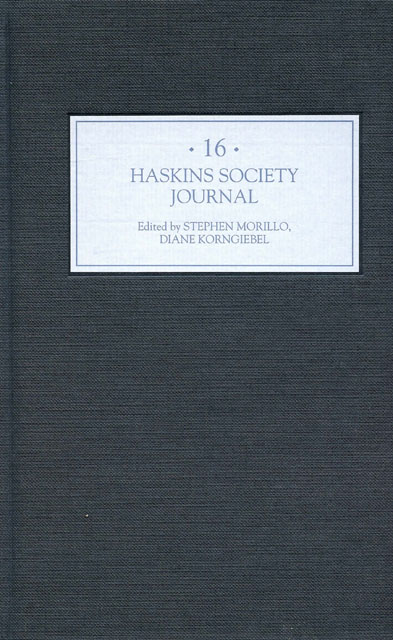Book contents
- Frontmatter
- Contents
- Editor’s Note
- Abbreviations
- 1 Hallucinations of Power: Climates of Fright in the Early Twelfth Century
- 2 Sites and Occasions of Peacemaking in England and Normandy, c. 900–c. 1150
- 3 Trans-border Transactions: Patterns of Patronage in Anglo-Norman Wales
- 4 Lay Piety, Confessional Directives and the Compiler’s Method in Late Anglo-Saxon England
- 5 Furor Teutonicus. A Note on Ethnic Stereotypes in Suger’s Deeds of Louis the Fat
- 6 Law and Theology in Gilbert of Foliot’s (c. 1105/10–1187/88) Correspondence
- 7 A Lost Law of Henry II: The Assize of Oxford and Monetary Reform
- 8 The Renaissance of the Twelfth Century Before Haskins
- 9 ‘Hobbes’, ‘Dogs’ and Politics in the Ireland of Lionel of Antwerp, c. 1361–6
9 - ‘Hobbes’, ‘Dogs’ and Politics in the Ireland of Lionel of Antwerp, c. 1361–6
Published online by Cambridge University Press: 23 March 2023
- Frontmatter
- Contents
- Editor’s Note
- Abbreviations
- 1 Hallucinations of Power: Climates of Fright in the Early Twelfth Century
- 2 Sites and Occasions of Peacemaking in England and Normandy, c. 900–c. 1150
- 3 Trans-border Transactions: Patterns of Patronage in Anglo-Norman Wales
- 4 Lay Piety, Confessional Directives and the Compiler’s Method in Late Anglo-Saxon England
- 5 Furor Teutonicus. A Note on Ethnic Stereotypes in Suger’s Deeds of Louis the Fat
- 6 Law and Theology in Gilbert of Foliot’s (c. 1105/10–1187/88) Correspondence
- 7 A Lost Law of Henry II: The Assize of Oxford and Monetary Reform
- 8 The Renaissance of the Twelfth Century Before Haskins
- 9 ‘Hobbes’, ‘Dogs’ and Politics in the Ireland of Lionel of Antwerp, c. 1361–6
Summary
On 15 September 1361, Lionel of Antwerp (1338–68) disembarked at Dublin and began his tenure as the king's lieutenant in Ireland. It was a pivotal moment for the English residents of Ireland. They had played on the conscience of the king at Westminster, and the fruit of their efforts was the appointment of a young lieutenant with a pedigree ideally suited to Irish office. Through his wife, Lionel laid claim to the vast inheritance of the Burgh family, including Ulster – once Ireland’s premier earldom – and the lordship of Connacht. But Lionel was no ordinary noble. He was a Plantagenet, the second surviving son of King Edward III (1327–77) and soon to become duke of Clarence. The appointment of so exalted a chief governor heralded four decades during which the lordship of Ireland was lavished with more attention from England than it had received since the reign of King John (1199–1216). The armies that crossed the Irish Sea were principally funded not from dwindling Irish revenues but by the English exchequer. The intention, however aspirational, was to reverse the various misfortunes the colony had suffered and return it to the health it had enjoyed in the late thirteenth century when it had been self-sufficient and profitable. With so much favouring Lionel’s enterprise, it would be fair to assume that lieutenant and colony would be united by a sense of common purpose. Why they were not is the subject of this paper.
Lionel served in Ireland from September 1361 until November 1366, with one extended period of absence from 23 April until 8 December 1364. When he left for the last time in 1366 to marry a Milanese bride, he reputedly swore never to return. What induced the chronicler to record this is far from clear. The Irish chancery rolls for the period have long since been lost and the Dublin annalist has little to say. Possibly it betrays a typical English distaste for ‘barbarous’ Ireland, a reaction which, for Lionel, was no doubt reinforced by the prospect of a shimmering career in northern Italy. But there was probably more to the remark than innate antipathy.
- Type
- Chapter
- Information
- The Haskins Society Journal2005. Studies in Medieval History, pp. 117 - 148Publisher: Boydell & BrewerPrint publication year: 2006



